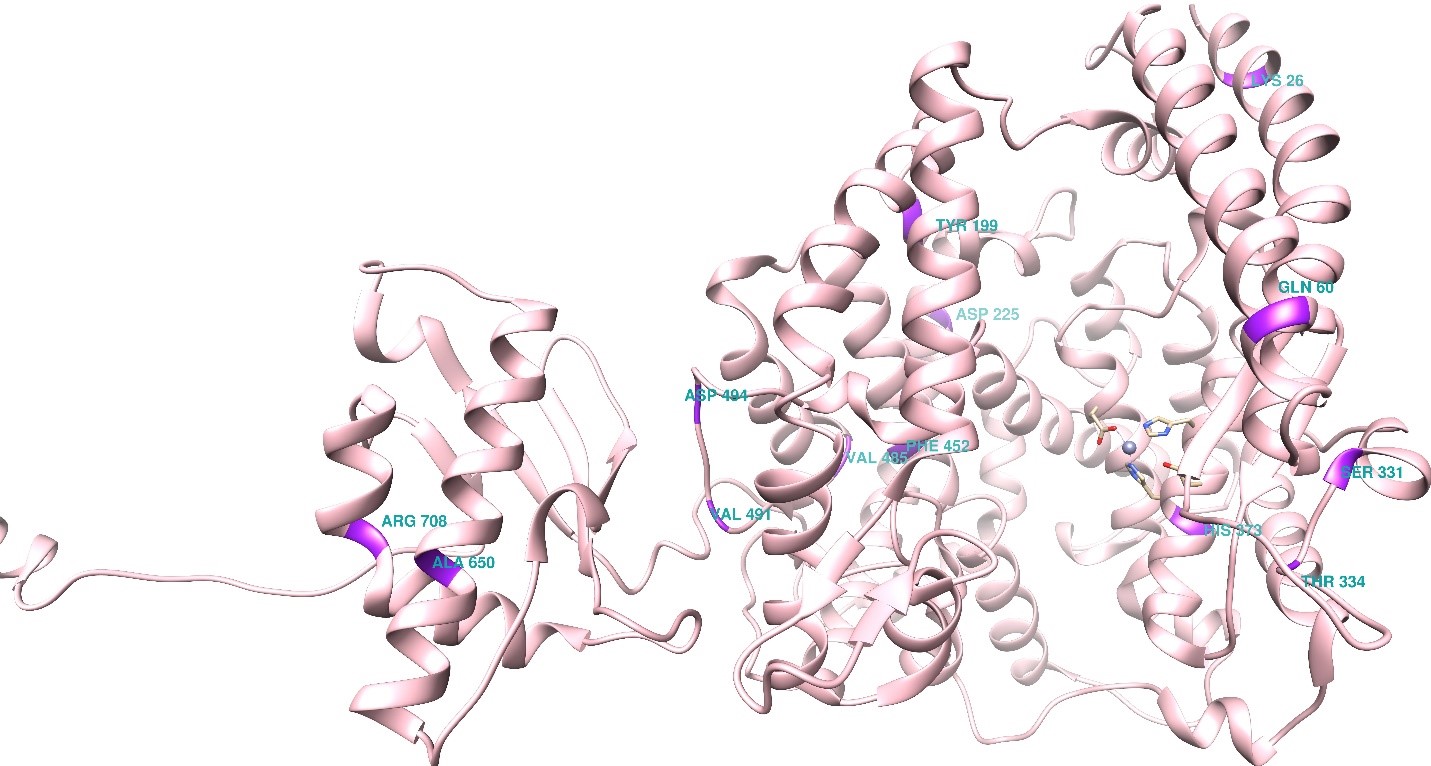- Research Centers
- Reproductive Endocrinology Research Center
- Prevention of Metabolic Disorders Research center
- Nutrition and Endocrine Research Center
- Endocrine Physiology Research Center
- Cellular-Molecular Research Center
- Prevention and Treatment of Obesity Research Center
- Endocrine Research Center
- Research Center for Social Determinants of Health

Iranian reference genome project findings in SARS CoV 2 infection susceptibility which influenced by ACE2 genetic polymorphisms
The pandemic of COVID-19 confirmed that ethnic and geographical differences play a significant role in the susceptibility to disease. Some studies considered the role of socioeconomic factors in explaining racial differences in health status. In addition to the social and cultural differences, infectious sources, and transmission routes, the genetic variations among individuals are also the main factor in response to different diseases.
Genetic variations and gene expression are two hidden layers of biochemical signaling, cell proliferation, and metabolism in alive creatures. On the other hand, pharmacogenomics as the growing field of research and development focuses on the effects of genetic variations on the response to drugs. Therefore, to battle the present unknown enemy, it is better to investigate all molecular aspects of the virus pathogenesis.
Iranian reference genome project is a powerful source of Iranian human genome variation and this source of data let the researchers in Endocrine Sciences Research Institute of Shahid Beheshti University of Medical Sciences published an article entitled “SARS‑CoV‑2 infection susceptibility influenced by ACE2 genetic polymorphisms: insights from Tehran Cardio‑Metabolic Genetic Study”.
This study evaluated the genetic susceptibility of the Iranian population to the entry of CoVID-19 into host cells in comparison with East Asia and Europe. In this project, researchers were generated unique genetic data from the Iranian population through a nearly 20-year cohort study and identified ACE2 mutations in the Iranian population and their effects on interaction with viral spike proteins and TMPRRS2 by modern techniques in data analysis and simulation.
The results showed that the two mutations K26R and S331F, the latter specific to the Iranian population, were able to reduce the receptor affinity for the viral spike protein. Also, the highest allele frequency of some genetic variants positively influencing TMPRSS2 expression within Iranian and European populations, as well as the lowest allele frequency in individuals with East Asian ancestry, can somewhat account for the discrepant disease predisposition and mortality rate across populations. Overall, genetic changes can alter viral pathogenicity and disease susceptibility in the population in different ways. Therefore, we must consider the genetic variation of ACE2 as well as other genes to design effective drugs and vaccines.
These findings indicate that Iranian genetic variations influence the virus's entrance into the human cells. However, it is essential to evaluate this conclusion in other studies. Moreover, this type of study can be helpful to investigate the effect of the new mutation on the Virus genomes and even the mRNA vaccines.
Hossein Lanjanian, Maryam Moazzam‑Jazi, Mehdi Hedayati, Mahdi Akbarzadeh, Kamran Guity, Bahareh Sedaghati‑khayat, Fereidoun Azizi, Maryam S. Daneshpour and their colleagues conducted this research.
اخبار مرتبط

Research News
Iranian reference genome project findings in SARS CoV 2 infection susceptibility which influenced by ACE2 genetic polymorphisms
The pandemic of COVID-19 confirmed that ethnic and geographical differences play a significant role in the susceptibility to disease. Some studies considered the role of socioeconomic factors in explaining racial differences in health status. In addition to the social and cu
Research News
(International Congress on Endocrine Disorders (ICED
In behalf of Iran Endocrine Society (IES), it is my great pleasure to invite you to participate in the 11th International Congress on Endocrine Disorders (ICED) will be held from November 3rd to 5th 2016 in Tehran, Islamic Republic of Iran.

Research News
Iranian reference genome project findings in SARS CoV 2 infection susceptibility which influenced by ACE2 genetic polymorphisms
The pandemic of COVID-19 confirmed that ethnic and geographical differences play a significant role in the susceptibility to disease. Some studies considered the role of socioeconomic factors in explaining racial differences in health status. In addition to the social and cu
Research News
(International Congress on Endocrine Disorders (ICED
In behalf of Iran Endocrine Society (IES), it is my great pleasure to invite you to participate in the 11th International Congress on Endocrine Disorders (ICED) will be held from November 3rd to 5th 2016 in Tehran, Islamic Republic of Iran.



